The production of ceramics is very old, dating back to the Roman era, but it saw significant development in the 16th century, alongside the development of high, three-level kilns.
It was also during this period that it began to export its colorful works of art. The local style is unmistakable, characterized by very bright colors (mainly bright yellow and blue, but also green or black).
Located very close to Salerno, on the coast of the Tyrrhenian Sea, it is part of the beautiful series of towns along the Amalfi Coast, starting from Positano, continuing with Amalfi, and up to Salerno.
Read also:
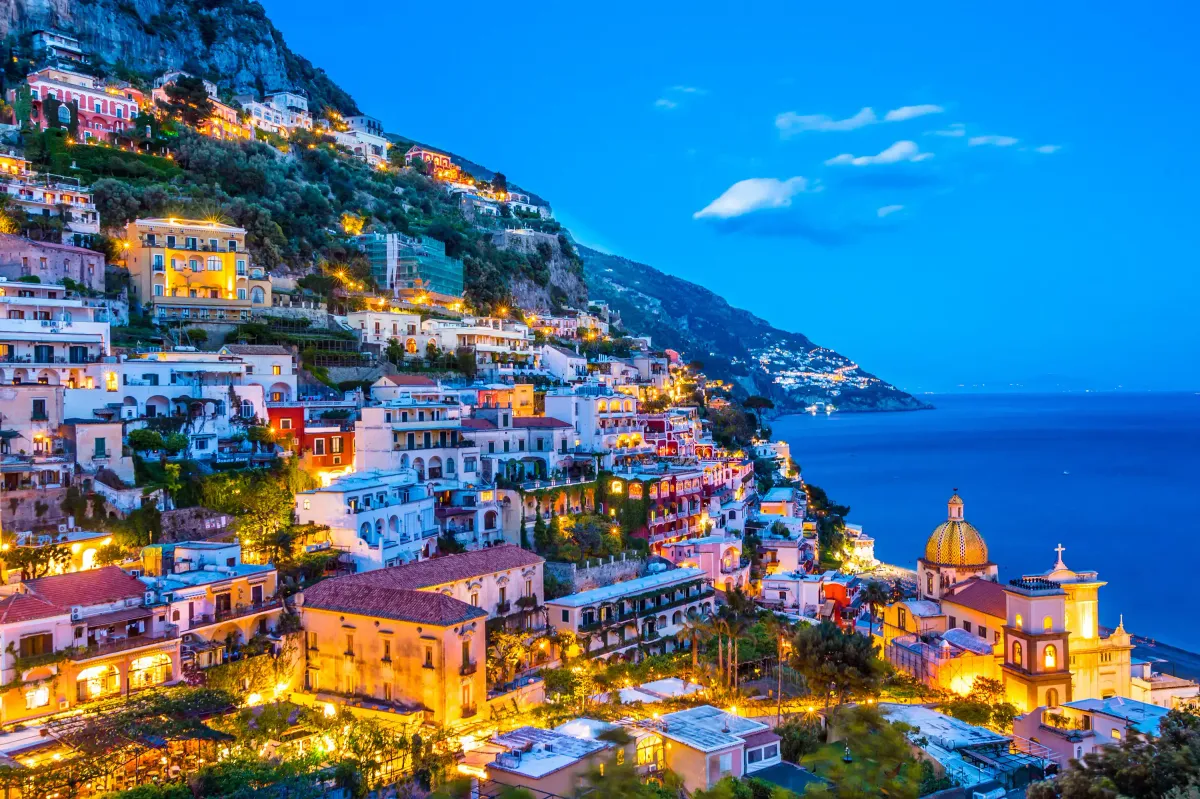
Walking through the narrow and extremely picturesque streets of the town, your eyes are delighted by the images of ceramic works displayed everywhere: on walls, on the pavement, in front of small shops that exhibit such works (some true works of art), so that you can assert, without fear of being wrong, that the small town is a true open-air museum.
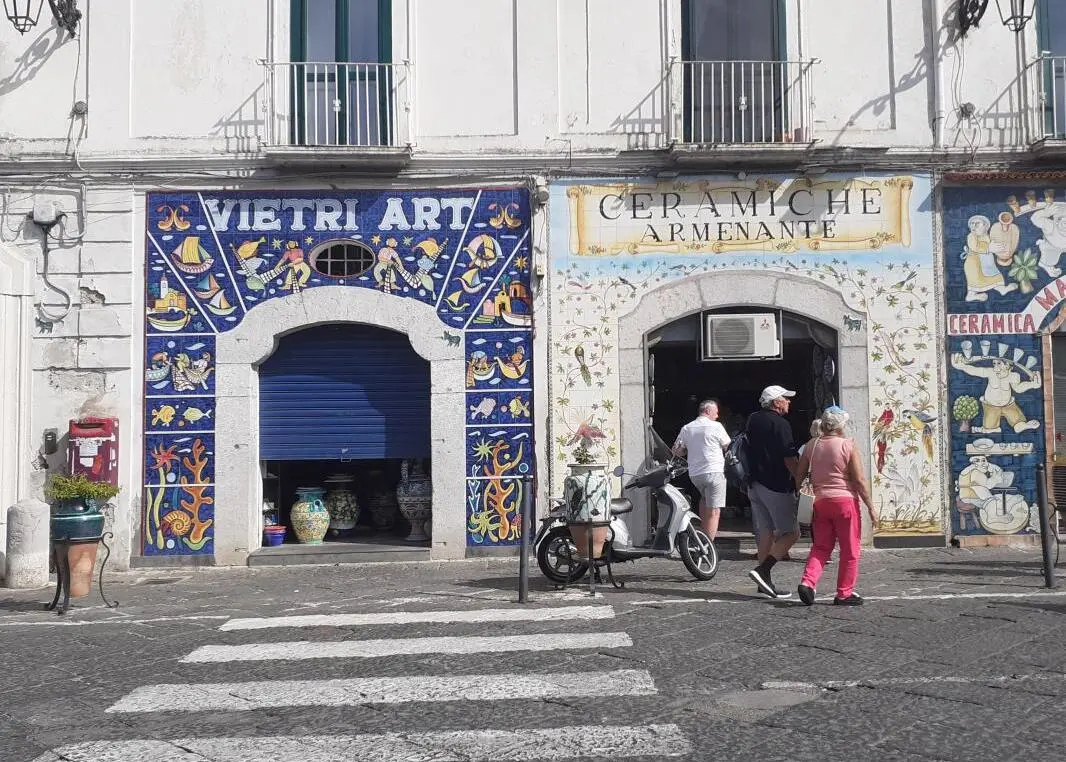
Our journey through the town begins in a small square (Piazza Matteotti), located at the entrance to Vietri sul Mare, where themermaid statue is located, representing the mythological character of the same name, made of ceramics (naturally, in the capital of ceramics, right?).
Some time ago, the statue was vandalized by a euphoric young man who broke its tail. The repair site is visible in the posted photo. The Mermaid has been frequently subjected to acts of vandalism since its installation.
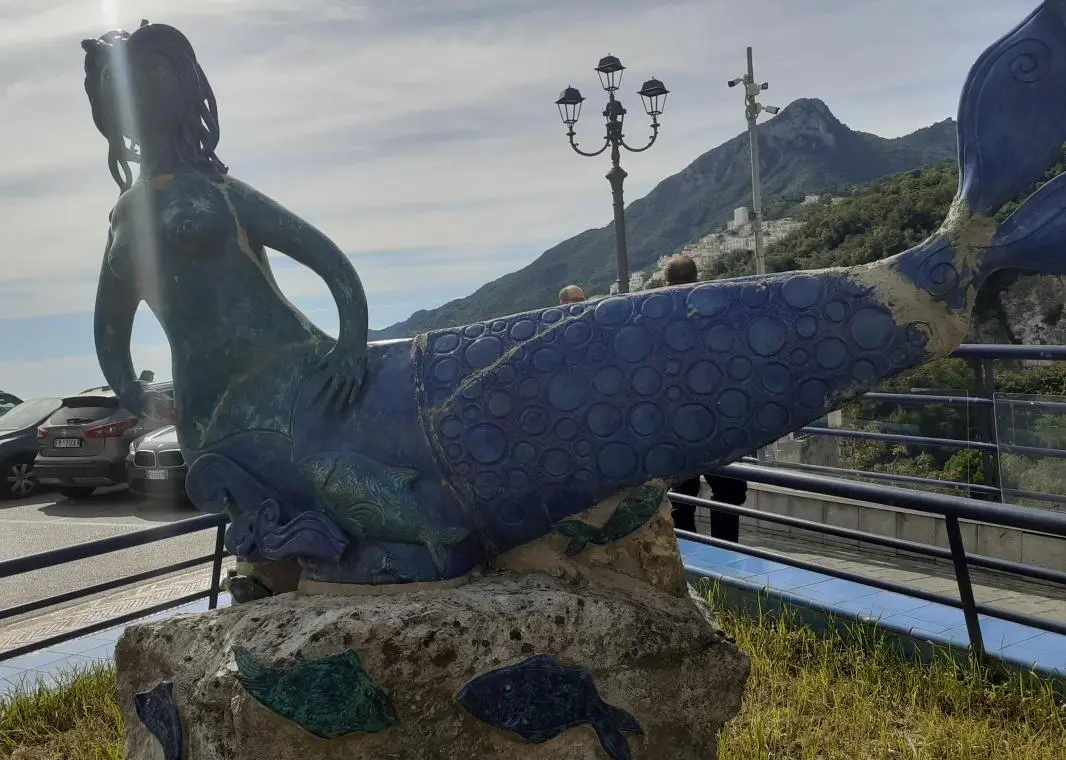
We admire the sea in the bay where the town is situated, take some photos, and then start wandering through the streets.
The small shops display a multitude of decorative ceramic works, with diverse sizes, shapes, colors, and themes. I saw designs with marine landscapes, scenes from the lives of the inhabitants, buildings, carnival-like masks, flowers, placed on plates, vases of various shapes, amphorae, etc. Truly a place of talent, art, creativity, and colors.
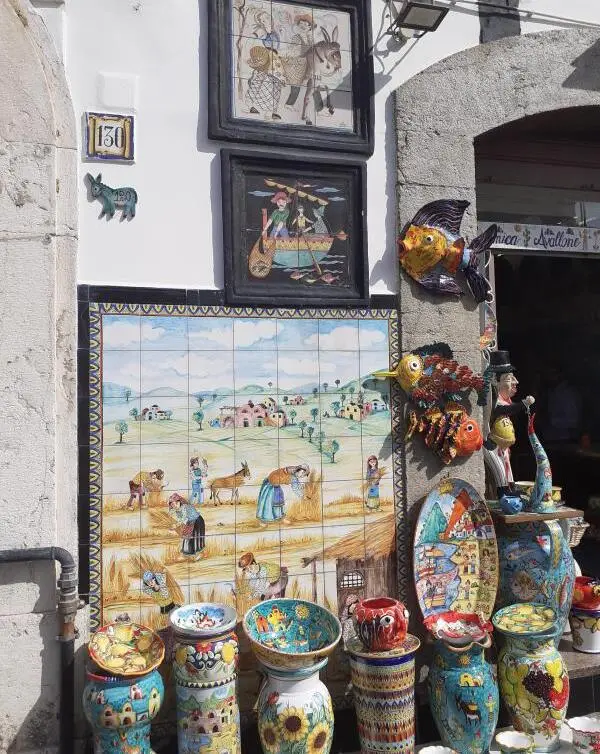
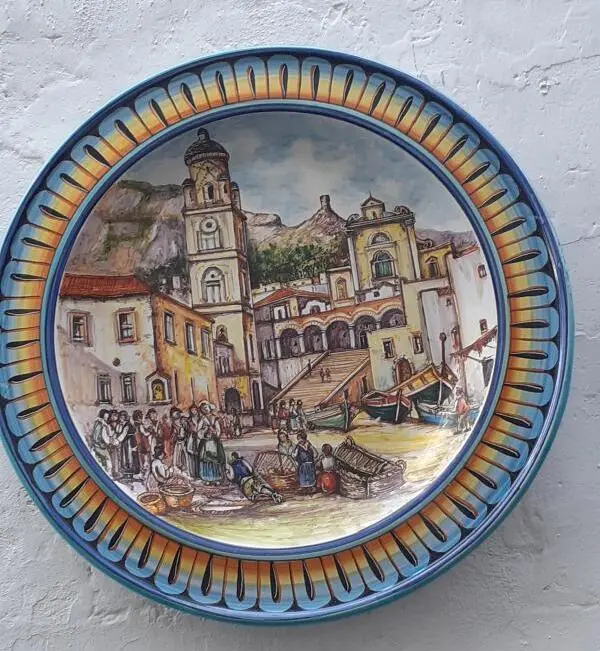
The highlights are two mural panels, applied to the walls of two buildings, made with black ceramics. Both depict scenes from the lives of the city's inhabitants: fishing, hunting, resting, raising animals.
Such panels are encountered almost at every step, with the subjects being diverse. These glazes and decorations, displayed in various ways, portray the entire story of the daily life of the inhabitants of Vietri, painted on ceramics.
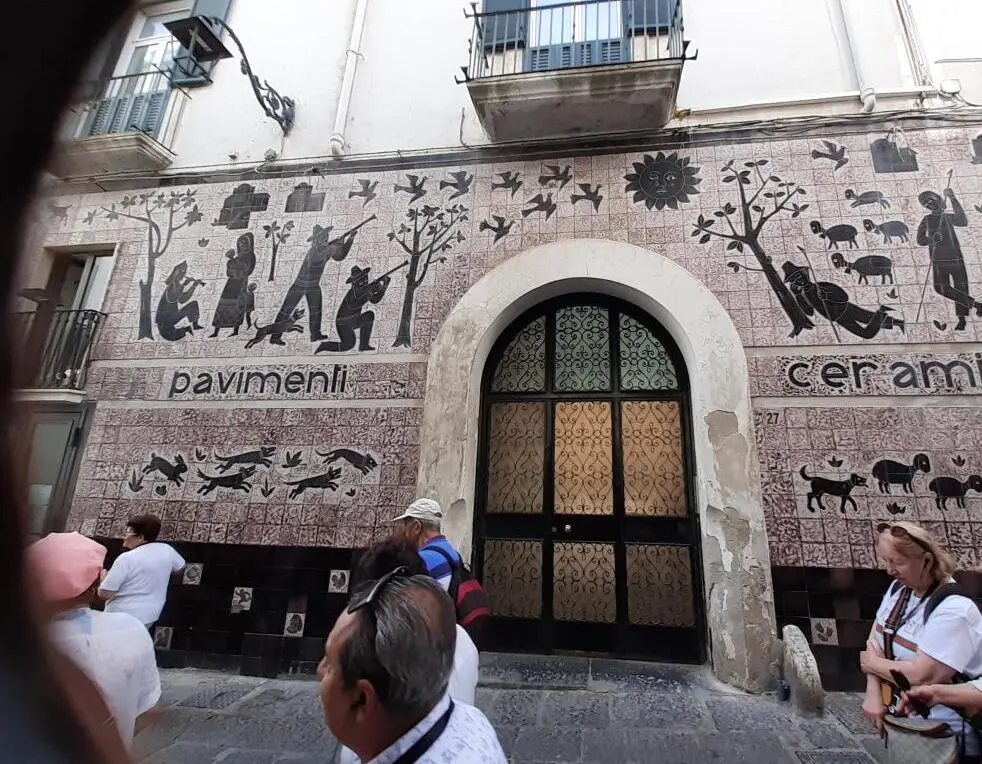
Slowly, to admire the ceramic decorations, we head towards the seafront, more precisely to the "Anfiteatro Dott. Michele Siani," a building named after a distinguished personality of the city, a renowned ENT doctor.
Our path passes by the old Solimene ceramics factory (also known as the Palace of Ceramics), built in the period 1954-1956 by architect Paolo Soleri.
The building, situated on the top of a hill in the city, catches the eye from afar, due to its height, with its architecture standing out, especially the way the exterior walls are clad with ceramic objects (ofcourse) colored in ochre and green, shades that are found on all decorations made by artisans from Vietri.
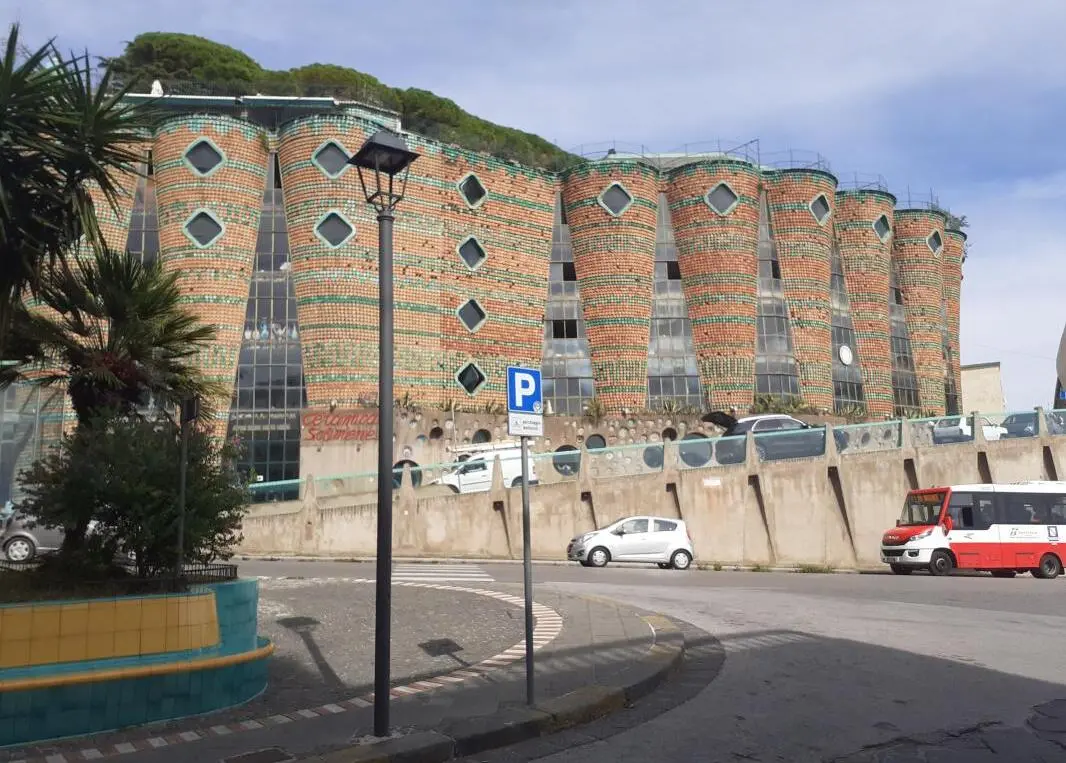
From the factory, we descend to the right towards the amphitheater, located on the high seafront of the city, a real viewpoint, a place from where the sea, the Marina di Vietri beach, and one of the attractions and symbols of Vietri sul Mare can be seen: the famous rocks so photographed by visitors, "I Due Fratelli" ("Faraglioni Fratelli").
The legend of these rocks tells of the battles fought by the locals against the Saracen fleet, battles that lasted quite some time. They concluded only after a duel between the strongest fighters of the two sides, at the end of which the two bloodied heroes realized they were brothers. I found this final dialogue between the two brothers on the internet:
"What do I see on your chest, Christian? The coat of arms of my ancestors. Look closely, Umfredo, it is the same coat of arms that I wear!" Umfredo protested incredulously, in a faint voice, when Rajan revealed to him: "But yes, all his life my father Helino has been searching for a son who had been kidnapped by pirates from him. It happened many years ago, and he searched the whole world! Now I have found you. You are my brother, and I have killed you!" And Umfredo - "I forgive you! And forgive me too! What a cruel fate, two brothers, we have killed each other." The two died with the desire to embrace even for a moment, then slipped into the sea and, as the legend says, turned into the two rocks that are also called "the two brothers".
Moreover, the "Comune di Vietri sul Mare" coat of arms also includes the two rocks I just mentioned.
And as proof that this amphitheater is in Vietri, the balustrade is topped with ceramic tiles.
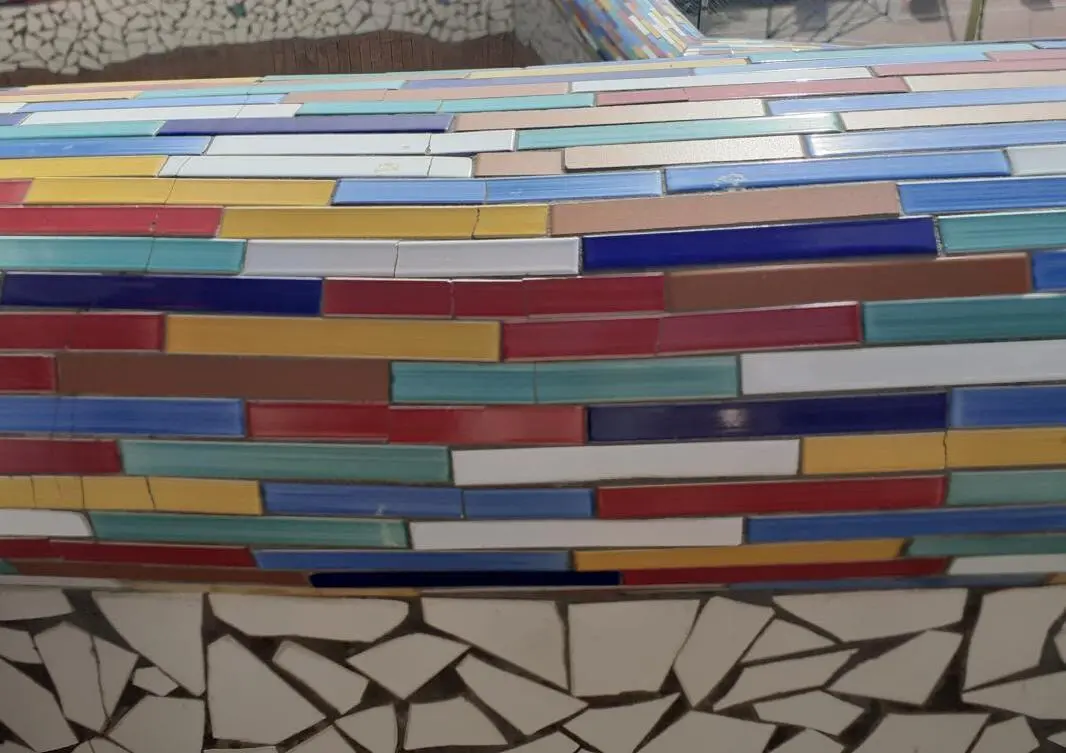
After the obligatory group photo, we wander around a bit more and then set off in search of a place to satisfy our hunger.
It is said that walking makes the legs beautiful. That may be so, but it also makes one equally hungry. So, after wandering around for a while, we entered a bodega where four hungry people barely managed to overcome two pizzas, each as big as a wagon wheel. Were they good? Mama mia, I would enjoy such a thing as often as possible.
Thank you for reading and make sure to subscribe. We're constantly exploring new destinations and share our stories, tips, and the beauty we discover along the way.


